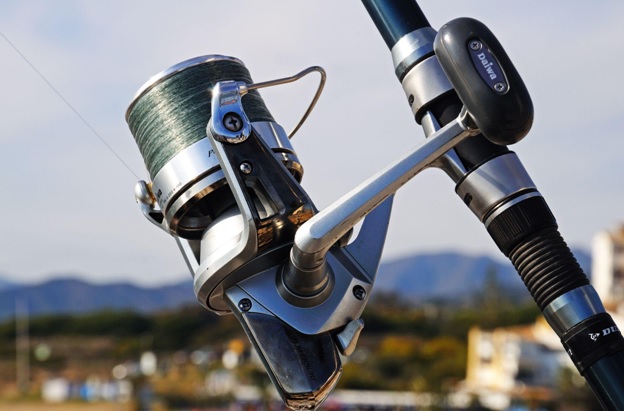Posted by Forrest on May 23rd 2024
Common Problems with Daiwa Fishing Reels (and Solutions)
Daiwa fishing reels are some of the best in the industry, and range alongside other well-respected, even legendary brands like Abu Garcia, Penn, Okuma, Lew’s, and Quantum for quality.
Whether you’re fishing in saltwater or sweetwater, Daiwa fishing reels perform. But that doesn’t mean they’re impervious to wear, user abuse, and error.
Most problems commonly encountered with fishing reels, both conventional/casting and spinning reels, will be covered in this article, along with potential fixes.
For Spinners: Line Twist
Line twist affects spinning reels far more often than it affects casters, and there are three main causes.
One is that you are using a spinner or another lure that is causing line twist as you retrieve. Putting a snap swivel on the end of your line or leader can help prevent this.
The other two are caused by user error. For one thing, closing the bail with the reel handle causes line twist; so does reeling against the drag.
The solutions are equally simple. Close the bail by hand, not using the reel’s crank handle, and don’t reel when the spool is stuck. That just puts twist in the line. If you have a fish running or a snag, let it go, or don’t reel against the snag or the running fish.
For Spinners: Fatigued/Snapped Bail Spring
Far and away the first part that fails on spinning reels is the bail spring. When this happens, your bail won’t stay in either the open or closed position. It’ll just be limp.
You can still use a reel with a snapped bail spring but you run the risk of a strong fish flipping the bail open while you’re fighting, which can be disastrous.
Unfortunately, Daiwa mostly uses torsion springs in their spinning reels, which are failure-prone. However, the repair is remarkably easy to make and you can do it at home without specialized tools. You will need a compatible replacement bail spring, however, so you’ll need to contact Daiwa, or an authorized parts distributor, directly.
For Casters: Backlash
Backlash is a serious problem affecting casting reels, and is a nightmare for inexperienced fishermen that don’t know how to thumb and brake the spool properly.
However, it is also true that there are things you can do to make sure you don’t experience more backlashes than you need to.
One is to fish with braided line. Yes, it is more expensive and getting knots out of braid is effectively impossible; but it also doesn’t have memory, unlike mono, so it won’t blow up all over the place if there’s a little twist in it.
Simply switching over to braid can eliminate many backlashes when fishing with a caster.
Also, make sure to set the mechanical brake properly for tension in the spool while casting, as well as the centrifugal brake (if there is one, not all casters have them). The mechanical brake should be set approximately so that when the lure is freespooled, it drops to the water/ground and the spool stops spinning. That is just about perfect tension for casting under most conditions. And, of course, you must learn to properly thumb the spool to brake the lure as you cast.
For Both: Braided Line Slipping
The spools of both casters and spinners can be affected by line slippage, especially when fishing super-slick, low-test braid of a very small diameter.
Some reels have a little plastic or rubber insert around the center of the spool that prevents this; those that don’t and are either bare steel or aluminum will need a little help. If the line slips, you won’t be able to effectively use your drag.
There are two ways to correct this. One is to start the spool with a little mono and then tie in your braid. The other is to prep the spool by wrapping it once around with duct tape first, then to tie on your braid. Both work; in the latter case, the duct tape gives the braid something to bite so it doesn’t spin and slip around the spool.
For Both: Reel Feels Gritty or Doesn’t Crank Smoothly
Both casting and spinning Daiwa reels will suffer when they have not been treated with the appropriate routine and preventative maintenance. Salt deposits, corrosion, sand and dust getting under the spool and in the gears, and natural wear and tear can all make a reel feel grittier than it should.
Sometimes, a simple drop of reel oil along the casting reel’s level wind, or on the spinning reel’s spool shaft, will be all that’s needed; other times, you’ll have to take the reel apart completely, wash the parts with soap and water, and then individually re-oil them before re-assembling.
If you have to do this, just make sure you pay close attention to the order in which you take the parts off, and have a small magnetic tray nearby so you don’t lose the small screws and springs that are all over the inside of a fishing reel.
Explore New Daiwa Fishing Reels and Rods Here
Getting ready to fix up some of your old Daiwa fishing reels? The maintenance invoked here is applicable to other brands, too, and was chosen by applicability based on reel type, not on brand or model.
Either way, if you need to replace any of your tackle, we carry a wide range of rods and reels. Check them out if you’re in the running for a new fishing outfit before you take your next trip.


